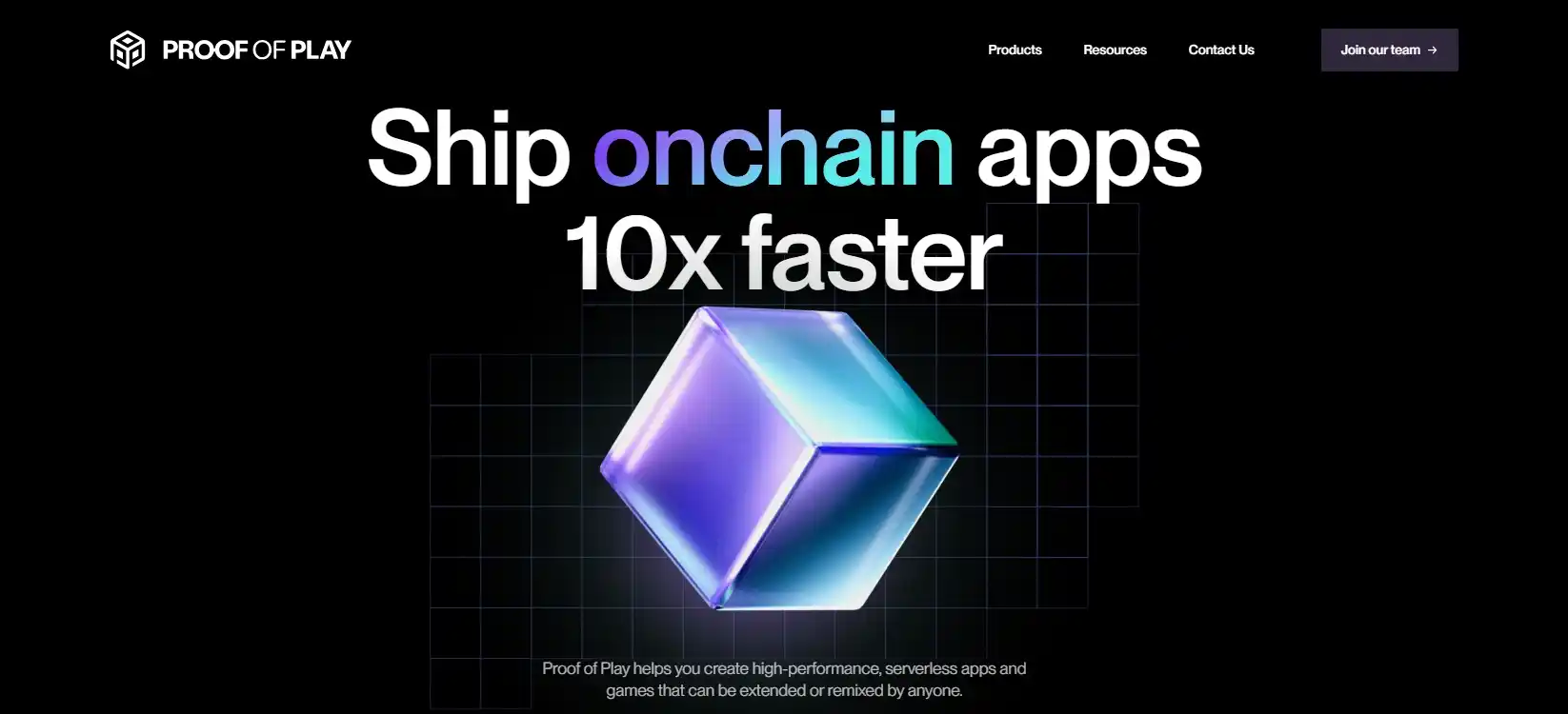Proof of Play is an innovative platform designed for creating decentralized blockchain games. Unlike traditional gaming projects, its economy is built on principles of transparency and true asset ownership. Players can earn, trade in-game items, and influence ecosystem development.
The project founders aim to eliminate drawbacks of classic P2E games like token inflation or dependence on centralized servers. Through the use of smart contracts and NFTs, Proof of Play offers a sustainable model where digital assets maintain long-term value.
Contents:
- What is Proof of Play?
- Platform Technologies and Architecture
- Game Economy and Monetization
- Proof of Play's Competitive Advantages
- Project Future and Development Plans
- Conclusion
What is Proof of Play?
Proof of Play represents a new generation of gaming platforms where blockchain serves as the foundation for creating a fair and sustainable ecosystem. The project combines elements of traditional gaming with decentralized technologies, allowing users not only to entertain themselves but also to earn real income.
The core idea is to give players full control over their assets. Unlike conventional online games where items are stored on developers' servers, here all in-game values are recorded on the blockchain. This eliminates data loss risks and enables free trading.
Moreover, Proof of Play implements mechanisms preventing inflation. The game economy is structured to ensure fair reward distribution while maintaining balance between newcomers and experienced participants.
Platform Technologies and Architecture
Proof of Play is built on hybrid architecture combining advantages of public and private blockchains. This enables high transaction speeds without compromising security. Smart contracts handle all key processes including NFT issuance, reward distribution, and auction management.
The platform supports cross-chain interaction, giving users freedom to choose transaction networks. Main integrations include:
- Ethereum — for NFT operations and DeFi tools.
- Polygon — provides low fees and fast transfers.
- Solana — used for high-speed operations.
Developers have also implemented an oracle system connecting game events with real-world data. For example, PvP battle outcomes may affect market value of certain assets.
Game Economy and Monetization
Proof of Play offers a balanced economic model where every participant can find suitable earning methods. The platform combines classic play-to-earn mechanics with innovative reward distribution approaches. Special attention is given to preventing inflation and maintaining long-term asset value.
Main earning methods:
| Method | Description |
|---|---|
| Battles | Rewards for PvP and PvE mode victories. |
| Staking | Passive income from holding game tokens. |
| NFT Trading | Selling unique items on marketplaces. |
| Content Creation | Developing mods and maps with monetization. |
After each gaming season, a token burn mechanism automatically activates to maintain economic balance. Developers have also implemented an adaptive reward system considering player activity and overall market conditions. This approach makes monetization transparent and predictable for all ecosystem participants.
Proof of Play's Competitive Advantages
Proof of Play stands out among blockchain games through several key features. First, it eliminates centralized control — all processes are community-regulated via DAO.
Second, the platform offers deeper DeFi integration. Players can use assets for loans or liquidity pool participation.
Finally, developers emphasize quality gameplay beyond monetization. This attracts both crypto enthusiasts and regular gamers.
Project Future and Development Plans
The Proof of Play team continues developing the platform, focusing on functionality expansion and user experience improvement. Several key initiatives are planned to attract new audiences and strengthen positions in the blockchain gaming industry.
Main planned innovations:
- Mobile version launch for iOS and Android
- Integration with additional blockchain networks
- Player reputation system implementation
- Partnerships with established game studios
These steps will make the platform more accessible and appealing to broader audiences. Special attention is given to creating balanced economics comfortable for both crypto enthusiasts and casual gamers. The long-term goal is becoming a Web3 gaming benchmark, offering unique combination of engaging gameplay and transparent monetization.
Conclusion
The blockchain gaming world has gained a truly revolutionary platform capable of transforming digital ownership and game economy concepts. Through thoughtful architecture and innovative monetization mechanisms, this project successfully addresses key P2E segment challenges. Decentralized DAO governance, DeFi integration, and gameplay quality focus create a unique ecosystem where players gain real control over assets. With current development pace and ambitious plans, the platform has every chance to set new standards in Web3 entertainment, combining best aspects of traditional gaming and blockchain technologies.






